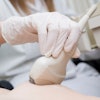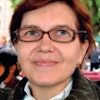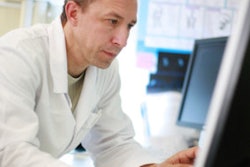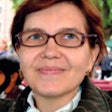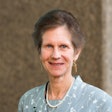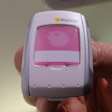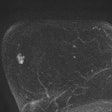
When Dr. Markus Berger set off to work on a Monday morning, he had no idea that his drive would eventually lead him to Buddhist teachings and to become a more thoughtful and complete radiologist.
"I was driving out of the garage toward the motorway when suddenly I felt I couldn't control the car anymore," he told ECR Today in a precongress interview. "I was sweating, I couldn't carry on. I drove back about a kilometer and put the car back in the garage, but -- being a faithful employee -- took the train to the hospital. I arrived an hour or two late."
Berger, who is chief of radiology at the Swiss Paraplegic Centre in Nottwil, Switzerland, talked to his supervisor and team. They agreed he could work half time for three to six weeks while he identified the problem.
"The first thing I did was to scan myself to look for anything organic. Of course, everything was normal. I went to see an ophthalmologist, a general internist. ... They prescribed me therapies, medications. They even prescribed me a pacemaker, which is hard for a radiologist who works with MRI machines," he said. "But the only thing I got was new glasses."
Berger turned to the internet, where he read about people having panic attacks while driving a car. After some thought, he realized he'd felt stressed and overworked for a couple of years and had found it difficult to sleep through the night.
 Dr. Myriam Hunink, PhD, meditates in her aikido clothes in the dojo.
Dr. Myriam Hunink, PhD, meditates in her aikido clothes in the dojo.Insomnia is among the first symptoms of burnout, according to Dr. Myriam Hunink, PhD, professor of radiology and clinical epidemiology at the Erasmus University Medical Centre in Rotterdam, the Netherlands. Other physical symptoms include headache, stiff neck, lower back pain, and gastrointestinal upsets.
Hunink came up with the idea for today's session after realizing -- from colleagues and the media -- that burnout was becoming more prevalent. She estimates that 50% of radiologists have at least one symptom of burnout, of which the most important for diagnosis are emotional, such as feeling overwhelmed, detached, or disillusioned.
"It's important on two levels: at the level of the individual, and at the level of the department. It has a huge effect on people and the quality of care they can give," she noted.
Berger attributes his burnout to -- among other things -- a hospital reorganization and 12-hour work days. According to Hunink, increasing workloads are among the factors leading to a rise in burnout. Radiologists are tackling more cases, interpreting more images, and under increased pressure not to make mistakes.
"Previously everything was done by interacting with the patient and referring physician, and there was time to talk. Now there's a long worklist to take care of, which seems to grow each day and -- if you don't do it -- all hell breaks loose," she said.
Moreover, there's an expectation that everything is done digitally, which means radiologists can feel they spend most of their day looking at pixels and clicking on their mouse. This potential problem is worse in radiology than other clinical specialties in which there is naturally more patient-clinician interaction.
Berger took out his bicycle around three weeks after he cut his working hours and found he could travel again. After six weeks, he went on vacation with his family and then returned to work. However, although he could resume his duties, he had to wait another two months to tackle his underlying burnout.
He met an old friend who had quit his job as the chief executive of a large Dutch multinational company when in his 50s to buy a farm. The friend recommended mindfulness-based stress reduction, which is an eight-week structured course of guided meditations, simple yoga exercises, and body awareness training.
 Mindfulness training at the Brussels Mindfulness Institute. Image courtesy of Beate Trück.
Mindfulness training at the Brussels Mindfulness Institute. Image courtesy of Beate Trück."I went there for the first time on a Tuesday evening," Berger said. "There were mats on the floor and candles. I'm a radiologist, a technology person, and felt totally in the wrong place. Then we started these exercises, and the first I did, I felt an immense pressure in my head. I was intrigued. I started to do daily exercises, and, after two weeks, I started to sleep through again."
There are many practical things radiologists can do to avoid burnout, according to Beate Trück, managing partner of the Brussels Mindfulness Institute. These include taking a walk in the park at lunchtime, leaving your mobile phone in the office, and using all your senses to appreciate your surroundings.
"It's important to pause. Our mind is a tricky thing -- it can tell you that you can't take a break and, when you're stressed, you've a tendency to believe it," she said.
At today's session, Trück intends to do a simple group meditation exercise as part of her talk. She will also explain basic principles of mindfulness, such as how to step out of autopilot. This is where your mind wanders onto work while you're doing other activities, such as showering or driving. Mindfulness training encourages people to destress by increasing awareness and focusing on the present moment.
Since his experience of burnout, Berger has taken a sabbatical for a summer course in mindfulness, read Buddhist teachings on the mind-body connection, and attended a Zen meditation week. Although not a Buddhist, he believes mindfulness, along with Buddha's ideas, have made him a better radiologist.
One Buddhist teaching is that the mind clings to certain ideas, he said. As a radiologist, this means seeing the first finding, entering autopilot, and ignoring other pertinent features of the image.
He gives the example of the funny internet video of a group of people with blue and red balls, in which viewers are asked to count the number of throws. Only after viewing the video again do they notice the huge gorilla walking among the crowd.
Mindfulness has helped him focus on what the images show rather than his preconceptions, so he misses less. Meanwhile, his experience of burnout has made him a more caring physician. He's less fixated on the power of high-tech medicine and sees patients as people, not just cases, he added.
Originally published in ECR Today on 4 March 2017.
Copyright © 2017 European Society of Radiology
